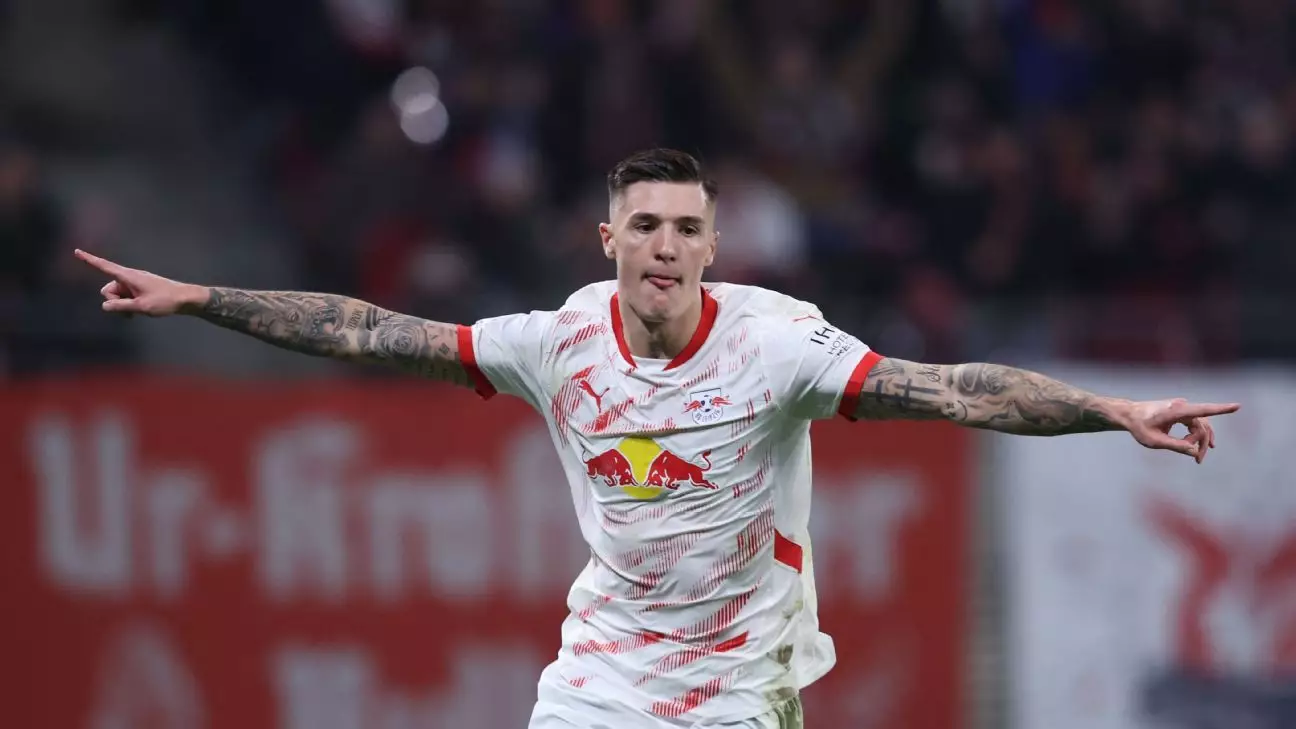In the high-stakes chess game of football transfers, Benjamin Sesko emerges as a coveted pawn, igniting fierce competition among the Premier League giants. This Slovenian prodigy has captivated the attention of both Manchester United and Newcastle United, each eager to secure his services for the next chapter of their ambitions. The underlying tension is palpable: a bidding war looming, with offers soaring over €80 million, underscores how valuable Sesko has become within Europe’s elite transfer market.
Yet, beyond mere monetary bids lies a deeper narrative—each club’s strategic motives and long-term plans. Newcastle’s initial bid, rejected but subsequently improved, signals their serious intent to bolster their attacking arsenal. Similarly, Manchester United’s interest highlights a shift towards reclaiming their position among Europe’s top clubs, as they seek young, talented strikers to rejuvenate their frontline. While both clubs have resources to bid, Manchester’s “tight” budget hints at the complexities of managing financial fair play alongside the pursuit of star talent.
What makes Sesko an intriguing target isn’t just his impressive stats—21 goals in 45 appearances for Leipzig last season—but his potential to develop into a world-class striker. His sidelining from Leipzig’s recent friendly, likely a sign of negotiations intensifying, points to a pivotal transfer that could reshape their attacking options. The question remains: will Sesko opt for the Premier League’s allure, or will Leipzig convince him to stay? Historically, players faced with similar crossroads have often found that the right club and environment can accelerate their growth, turning them into global stars sooner than anticipated.
The Impact on Newcastle: A Possible Game-Changer in Attack and Beyond
Should Newcastle succeed in landing Sesko, the ripple effects will extend beyond mere squad enhancement; they could redefine the club’s competitive stature. Currently, Newcastle’s pursuit of the Slovenian dynamo indicates their desire to consolidate their attack, especially as they navigate the uncertain future of Alexander Isak. The bid from Liverpool for Isak exceeded £110 million, a figure indicating how highly he is valued across Europe. Yet, Newcastle’s management appears committed to keeping their talisman, especially if they can reinforce his supporting cast with versatile options like Wissa from Brentford or other target men.
The club’s ambitions are clear: they want to build a robust, goal-scoring machine capable of challenging traditional powerhouses. If Sesko arrives, his youthful energy and goal-scoring instinct could be instrumental in this vision. Furthermore, his signing might ease pressure on Isak, allowing the Swede to focus more on his role rather than being the sole focus of the attack. The so-called “force multiplier” effect of such signings is undeniable in modern football, where a few key additions can unlock transformative results.
Yet, the transfer’s success hinges on Newcastle’s resolve amid competition. A bid of approximately £70 million plus add-ons positions them aggressively, but Manchester United’s similar offer complicates the landscape. The decision for Sesko might ultimately boil down to where he perceives the best environment for his development and where he feels he can make the most impact early on.
The Broader Transfer Ecosystem: Other Notable Rumors and Strategic Moves
While the Sesko saga captivates attention, other transfer stories hint at a shifting landscape that reveals a club’s broader strategic planning. For Leipzig, Xavi Simons remains an interesting case. The Dutch international made an impressive impact last season, yet the club hasn’t received concrete offers, despite reported interest from Chelsea. His situation exemplifies how some clubs prefer to develop talent before selling, valuing their assets’ long-term potential over immediate profit.
Meanwhile, the transfer market’s volatility underscores how clubs justify large investments based on the tangible potential for future success. For a club like Leipzig, developing players like Simons and Sesko not only enhances their competitive strength but also provides lucrative resale opportunities. For Premier League clubs, acquiring such talents affords a chance to accelerate their rebuilding phases and reassert dominance domestically and continentally.
Overall, these transfer pursuits illustrate a broader strategic pattern where clubs carefully balance immediate squad needs against long-term asset management. Success hinges on identifying players whose growth trajectories align with club ambitions, and securing them at the right valuation. There’s an art to this—one that involves meticulous scouting, shrewd negotiations, and sometimes, a fair amount of luck in navigating the unpredictable waters of football transfers.
Ultimately, the upcoming weeks promise a fascinating glimpse into how elite clubs utilize transfer windows not just as a means to sign players, but as instruments for strategic evolution and competitive supremacy. With Sesko potentially on the verge of a seismic move, and other significant negotiations unfolding, this period will undoubtedly leave a lasting legacy on the shape of European football.

